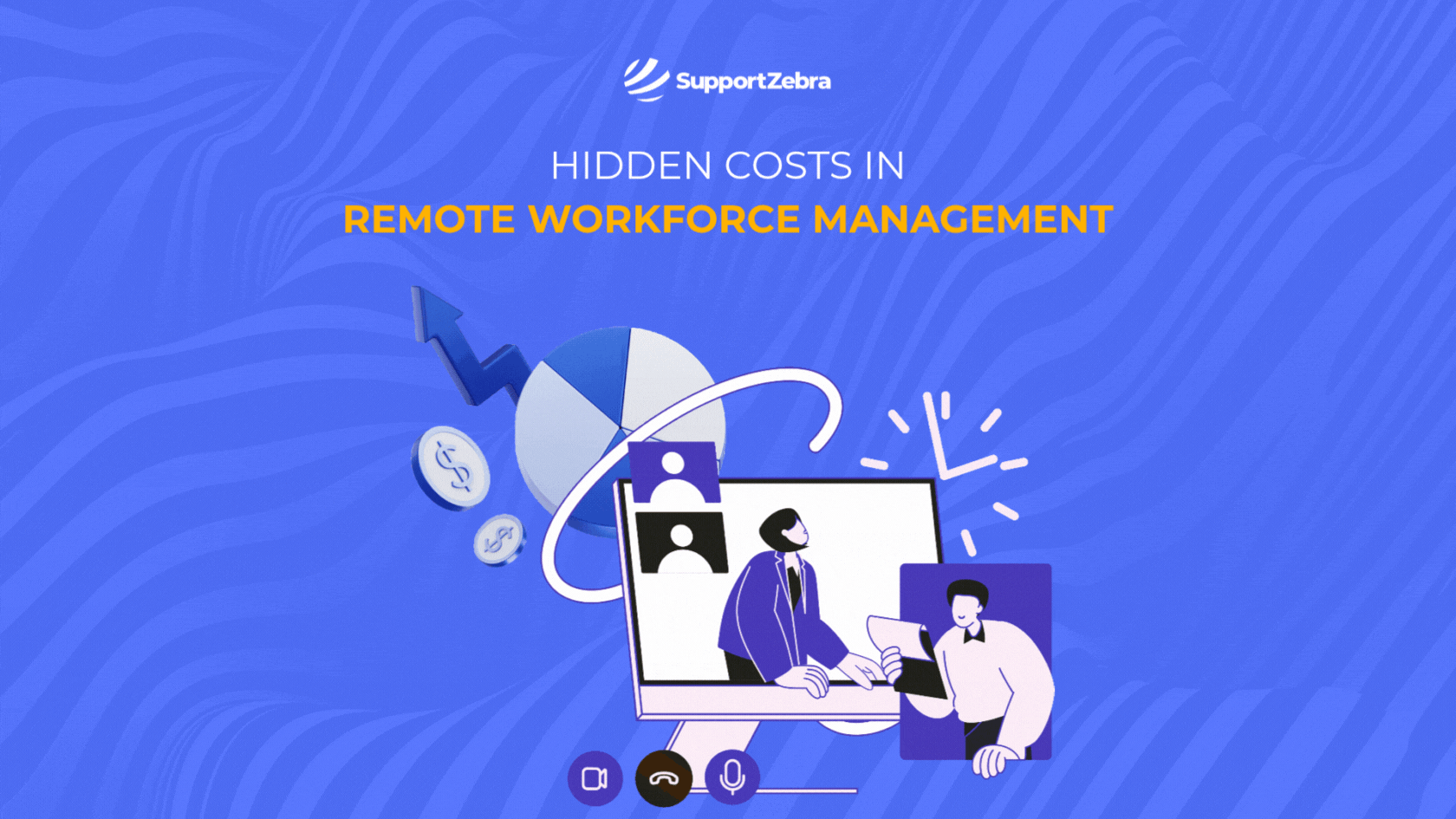Think Remote Work is Cheaper? Think Again! The Hidden Costs You Didn’t See Coming
Remote workforce management has become increasingly popular, allowing businesses to tap into a global talent pool and offering employees unmatched flexibility. This approach not only significantly reduces costs but also improves work-life balance. However, managing a remote team presents various challenges. Beyond the apparent benefits, organizations engaging in remote workforce management must address hidden costs to maintain efficiency and reliability.
In this blog, we will explore the frequently overlooked expenditures associated with technology and security in remote workforce management, highlighting the complexities and offering solutions for these crucial aspects.
Hidden Technology Costs in Remote Workforce Management
Managing a remote workforce involves substantial technological requirements beyond the initial setup—ongoing expenses can quickly accumulate. One of the primary costs is equipping all remote employees with the necessary hardware and software to perform their duties effectively. This typically requires companies to invest in laptops, smartphones, and even ergonomic furniture to create a conducive work environment at home.
Furthermore, various hidden costs are associated with the technology essential for effective remote workforce management.
-
Software Licenses and Subscriptions
Working from home requires costly software for communication, managing projects, and tracking productivity. This can get expensive, especially as teams grow and need more advanced features. -
Cybersecurity Measures
Working from home raises cybersecurity risks, making strong security software, VPNs, and safe communication tools essential. It also leads to higher technology expenses. -
Data Usage and Connectivity
Remote workers need fast internet to do their jobs well. This might mean companies should pay for their internet bills or give them portable Wi-Fi devices, leading to ongoing costs. -
Training and Support
Remote teams require training to use new software and technologies effectively. Additionally, ongoing tech support is vital to promptly address any issues and ensure that technical difficulties do not hinder productivity. -
Regular Updates and Upgrades
Consistent investment in technology upgrades and security is essential. This includes updating software, renewing licenses, and occasionally overhauling systems to stay current with tech advancements and security needs.
Hidden Security Costs in Remote Workforce Management
Organizations can find setting up strong security for managing remote workers is expensive. This includes buying VPNs, firewalls, encryption software, and endpoint security, paying for regular updates, training IT staff, and conducting security audits and penetration tests.
Beyond these initial expenses, various hidden costs are associated with maintaining a remote team’s security.
-
Decreased efficiency
Implementing security protocols like VPNs and multi-factor authentication may delay employee access to resources, resulting in frustration and decreased efficiency. -
Regulatory expenses
Companies must ensure that their remote work guidelines and security measures adhere to various laws and industry standards, which can be intricate and expensive to establish and uphold. -
Incident management and restoration expenses
Should a data breach or security incident occur, organizations may face substantial costs for investigating, resolving, and recovering from the situation, along with possible legal and regulatory fines. -
Harm to reputation
A security breach can harm an organization’s image, leading to diminished customer confidence, decreased brand reputation, and potential loss of business opportunities.
Companies must ensure that their remote workers receive regular cybersecurity training to minimize the chances of data breaches and other security mishaps. This training should encompass various subjects, including:
- Spotting and steering clear of phishing scams
- Crafting and overseeing robust passwords
- Securely utilizing public Wi-Fi networks
- Detecting and reporting questionable behaviors
- Appropriately managing and safeguarding confidential information.
Investing in employee training and promoting a culture of security awareness within your remote workforce management strategy can minimize the chances of security incidents caused by human error and the resulting expenses.
Strategies to Minimize Hidden Costs in Remote Workforce Management

Organizations must conduct a comprehensive cost analysis and budget for technology and security expenses to reduce hidden costs in managing a remote workforce. Key factors to consider include:
- Analyzing all possible expenses, from hardware and software to training and upkeep
- Estimating the expenses associated with setting up and managing security protocols like VPNs, firewalls, and encryption software
- Including the costs of training employees on cybersecurity protocols
- Setting aside funds for routine software updates and patches to mitigate vulnerabilities
- Taking into account the potential expenses related to security breaches and data leaks.
Organizations can enhance their ability to handle remote workforce management expenses by performing a thorough cost analysis and developing an achievable budget. Organizations can reduce hidden expenses in managing remote employees by implementing the strategies below:
-
Emphasize Critical Technologies
Invest in essential remote work efficiency and security tools, like dependable video conferencing platforms and secure file-sharing solutions. -
Scale Up Effectively
Opt for technology solutions that can grow alongside the organization, providing flexibility and expansion opportunities without unnecessary expenses. -
Foster Employee Engagement
Support and train employees to maximize the use of new technologies, minimizing the risk of inefficiency or neglect. -
Continuously Assess And Improve
Regularly evaluate the performance and utilization of technologies in place, making necessary adjustments to enhance efficiency and cost-effectiveness. -
Consider Outsourcing
Explore outsourcing specific technology and security functions, such as managed IT services or cloud-based solutions, to cut costs and leverage specialized expertise.
Outsourcing technology and security services helps companies cut hidden costs of managing remote workers by providing expert knowledge, lowering overhead, and eliminating equipment maintenance. Flexible, scalable solutions from partners boost efficiency and further reduce expenses.
Leveraging SupportZebra for Cost-Effective Remote Work Solutions
Managing a remote workforce provides global talent access and enhances work-life balance, but it incurs hidden costs like software licenses, cybersecurity, and training. To ensure productivity, safety, and affordability, companies should analyze expenses, budget for improvements, and consider strategic outsourcing.
At SupportZebra, we specialize in remote workforce management, serving as your trusted partner to significantly reduce the hidden expenses associated with remote workforce technology. As a leading outsourcing provider, we offer fully scalable customer support teams designed for eCommerce and SaaS operations.
At SupportZebra, we offer cost-effective solutions, expert skills, and a global talent pool to elevate your customer service experience. Our comprehensive management of office environments, technology, and training helps uncover and mitigate hidden expenses, driving operational efficiency in remote workforce technology.
Contact SupportZebra today to streamline your remote workforce management and unlock the full potential of your team.

